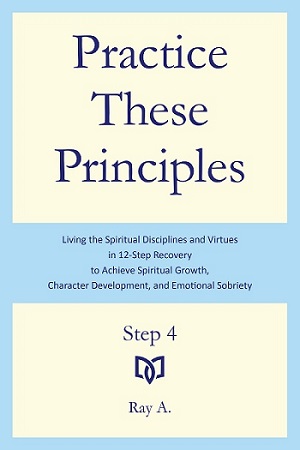
“As we get ready to work on Step 4, our first task is to decide on the subject or topic of our inventory, that is, what the inventory is actually about: the defects of character and/or emotion we wish to examine. That subject will determine the type of inventory we do, Type A: Harms Done to Me, and/or Type B: Harms Done By Me.
If this is the first time we do Step 4, we may wish to follow the Big Book’s suggestion and start with the emotions of anger, resentment, and fear, using the guide to Inventory Type A. If there are other emotions that we find particularly troublesome and which may jeopardize our sobriety, we would want to add those, following the 12&12’s suggestion. These may include shame, depression, and self-pity (cf. Chapter 3, 12&12 Expansion, Table 1).
This would be followed by a separate inventory organized around the harms we have done, using the guide to Inventory Type B. Here too we will have to choose the subject, depending on our personal situation at the time: emotions and/or defects, general or specific. Besides anger, resentment, and fear, emotions may include guilt, remorse, regret, and shame, while defects may include pride, dishonesty, greed, envy, jealousy, lust, gluttony, and sloth (cf. Chapter 3, 12&12 Expansion, Table 2).
Once we have decided on the type of inventory we are doing (Type A or B) and chosen its subject (specific or general emotions and/or character defects), we then need to decide on the personal, situational, or other context in which we will conduct our survey. This is the information we will enter under column 1 of our guide, the first component of our inventory, headed “People, Places, and Things.” It may include the following:
People (relations): parents, siblings, other relatives; spouse, children; companion or significant other, romantic relations; friends; work, school, church, or other professional or social relations; neighbors; authority and related figures such as boss, teacher, clergy, doctor, or police; and God
Places (settings): home, work, school, church; social, business, professional, or related settings like clubs, boards, associations; health and correctional settings like hospitals, jails, prisons; and, more broadly, a particular neighborhood, town, city, or country
Things (institutions, organizations, systems, issues): government or political institutions and parties; educational, business, medical, correctional, or other establishments or societal systems (as opposed to settings); church or organized religion; careers or professions; illness, disease, or aging; and political, social, economic, cultural, religious and other issues, including beliefs, ideologies, doctrines, sex, finances, and work as an issue rather than as a place
Let us consider each of these categories.
. . .
People, places, and things were not the cause of John’s problems. Nor are they the cause of ours. That cause is the subject of the second component of our inventory, to which we turn in the next chapter.”
– From Part I: Taking Inventory, Chapter 4: People, Places, and Things, pp. 53–54
For more PTP4 Excerpts, please click on link.